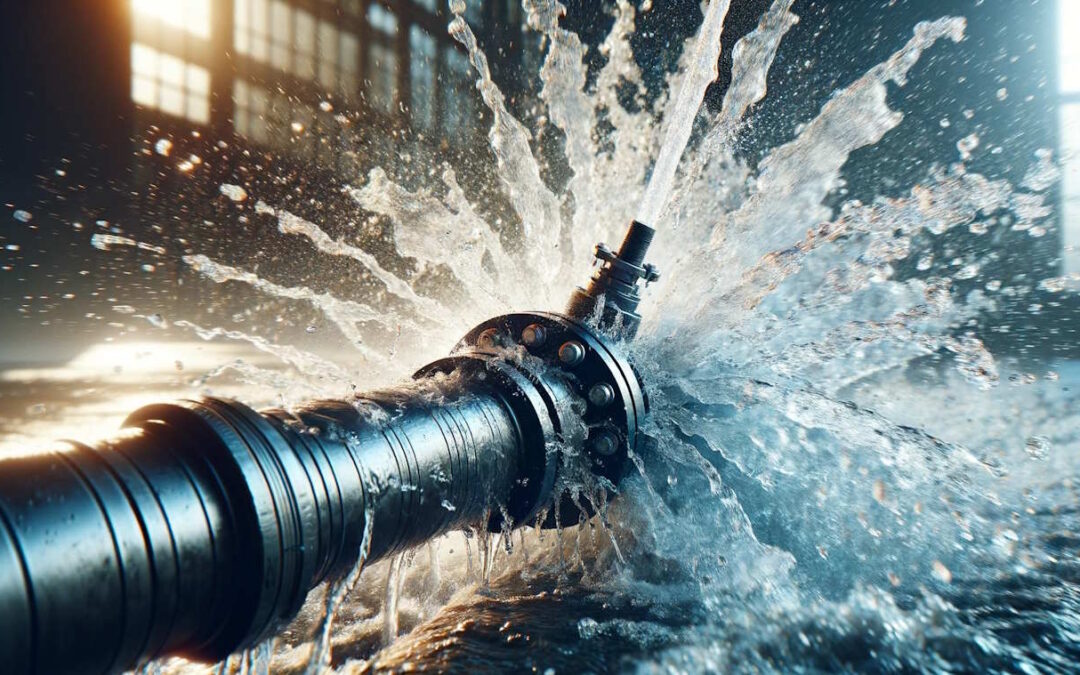Avoid Major Issues with Very Early Water Leak Detection and Prompt Repairs
Ingenious Solutions for Very Early Discovery of Water Leaks in Structures and Infrastructure
As the integrity of buildings and infrastructure is vital, the challenge of early discovery of water leakages has actually spurred ingenious options that promise to revolutionize the means we safeguard versus possible damages. From cutting-edge leak discovery modern technologies to the implementation of IoT sensing units for real-time surveillance, the landscape of leak prevention is evolving swiftly. Artificial intelligence algorithms supply a glance into the future of leak prediction, while thermal imaging presents a non-intrusive method for identifying surprise leakages. Automated water flow analysis systems are reshaping how leakages are determined and addressed, leading the way for an aggressive strategy to water leakage discovery. Each of these remedies holds the essential to guaranteeing the dependability and long life of our constructed environment, triggering a shift towards a more lasting and efficient future.
Advanced Leak Detection Technologies
Advanced leak discovery modern technologies, geared up with sophisticated sensors and algorithms, play a critical duty in quickly identifying and identifying water leaks in different settings. These innovations utilize a mix of acoustic, thermal, and electro-magnetic picking up methods to identify leaks properly. Acoustic sensing units discover the sound of escaping water, permitting specific localization of the leakage resource. Thermal imaging identifies temperature adjustments triggered by water leakage, offering another reliable approach for leakage identification. Electromagnetic sensors can recognize adjustments in electromagnetic fields caused by water, supplying yet an additional layer of leak detection capacity.

IoT Sensors for Real-Time Monitoring
In the realm of modern water leak detection, the combination of IoT sensing units for real-time surveillance represents a pivotal innovation in boosting proactive leakage detection capabilities. These sensing units supply continuous monitoring of water systems, offering real-time information on water flow rates, pressure variations, and temperature level modifications. By leveraging IoT technology, these sensors can find also the tiniest anomalies in water use patterns, enabling very early recognition of prospective leakages prior to they intensify into major issues.
IoT sensors transmit information to a centralized system, where advanced algorithms assess the information and produce informs or notifications when abnormalities are spotted. This real-time monitoring ability enables residential or commercial property proprietors or facility managers to quickly attend to leakages, lessening water damage, lowering fixing prices, and conserving water sources.
Moreover, IoT sensing units can be incorporated with structure administration systems, have a peek at this site allowing for computerized actions to found leakages, such as turning off water shutoffs or triggering pumps to minimize the impact of leaks. In general, the execution of IoT sensing units for real-time monitoring significantly improves the performance and effectiveness of water leakage discovery in buildings and facilities.
Artificial Intelligence Algorithms for Leakage Forecast

One key benefit of making use of artificial intelligence for leakage forecast is its capability to continually learn and improve its precision gradually. As more data is accumulated and fed right into the algorithm, it can improve its forecasts and adapt to altering conditions, inevitably boosting the dependability of leak discovery systems.
Moreover, artificial intelligence formulas can assist in determining refined indicators of leakages that may go unnoticed by typical tracking methods. water leak detection. By assessing intricate data embed in real-time, these formulas can offer early cautions and signals, allowing for timely intervention and preventative maintenance to alleviate prospective water damages and connected expenses
Using Thermal Imaging for Leakage Detection
Thermal imaging modern technology provides an appealing approach for detecting water leakages in numerous systems and infrastructures. By utilizing infrared radiation and temperature level variations, thermal imaging cameras can identify hidden leakages that are not easily noticeable to the naked eye.
One of the essential advantages of thermal important link imaging for leak detection is its non-intrusive nature. In general, the usage of thermal imaging innovation enhances the performance and accuracy of water leakage discovery, making it a beneficial tool for preserving the honesty of buildings and infrastructures.
Automated Water Circulation Evaluation Solutions
Just how can automatic water circulation evaluation systems reinvent the detection and management of leakages in various systems and frameworks? Automated water circulation analysis systems offer a positive strategy to leakage discovery by continually keeping an eye on water circulation rates and patterns. By establishing standard information, these systems can promptly determine variances that might show a leak, enabling prompt treatment to stop considerable damage.
These systems utilize innovative algorithms to evaluate real-time information and offer immediate notifies when abnormalities are discovered, enabling swift activity to be taken. Additionally, computerized water flow analysis systems can be integrated with building monitoring systems or IoT systems, boosting overall performance and allowing remote monitoring abilities.
In addition, the information accumulated by these systems can be made use of for predictive upkeep functions, helping to recognize possible powerlessness in the facilities before leakages occur. In general, the implementation of computerized water circulation evaluation systems can substantially improve leak detection have a peek here and monitoring techniques, ultimately bring about cost financial savings, lowered water wastefulness, and raised sustainability in structures and facilities.

Verdict
Finally, the integration of innovative leakage detection technologies, IoT sensors, maker learning algorithms, thermal imaging, and automated water flow analysis systems supplies innovative remedies for early detection of water leakages in structures and facilities. These modern technologies enable real-time surveillance, prediction of leaks, and efficient discovery approaches to stop water damages and wastage. Carrying out these options can assist in keeping the integrity and sustainability of water systems in different settings.